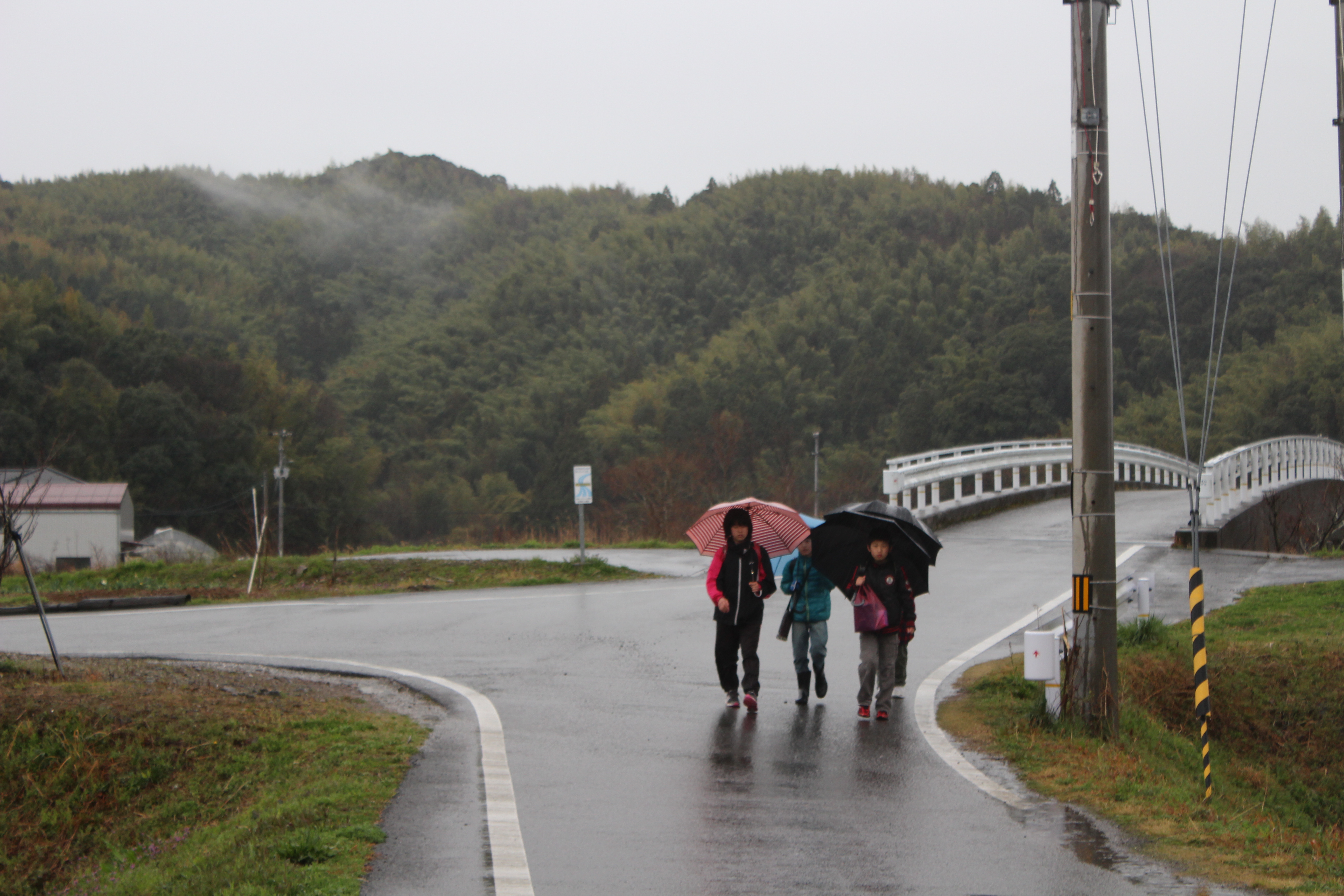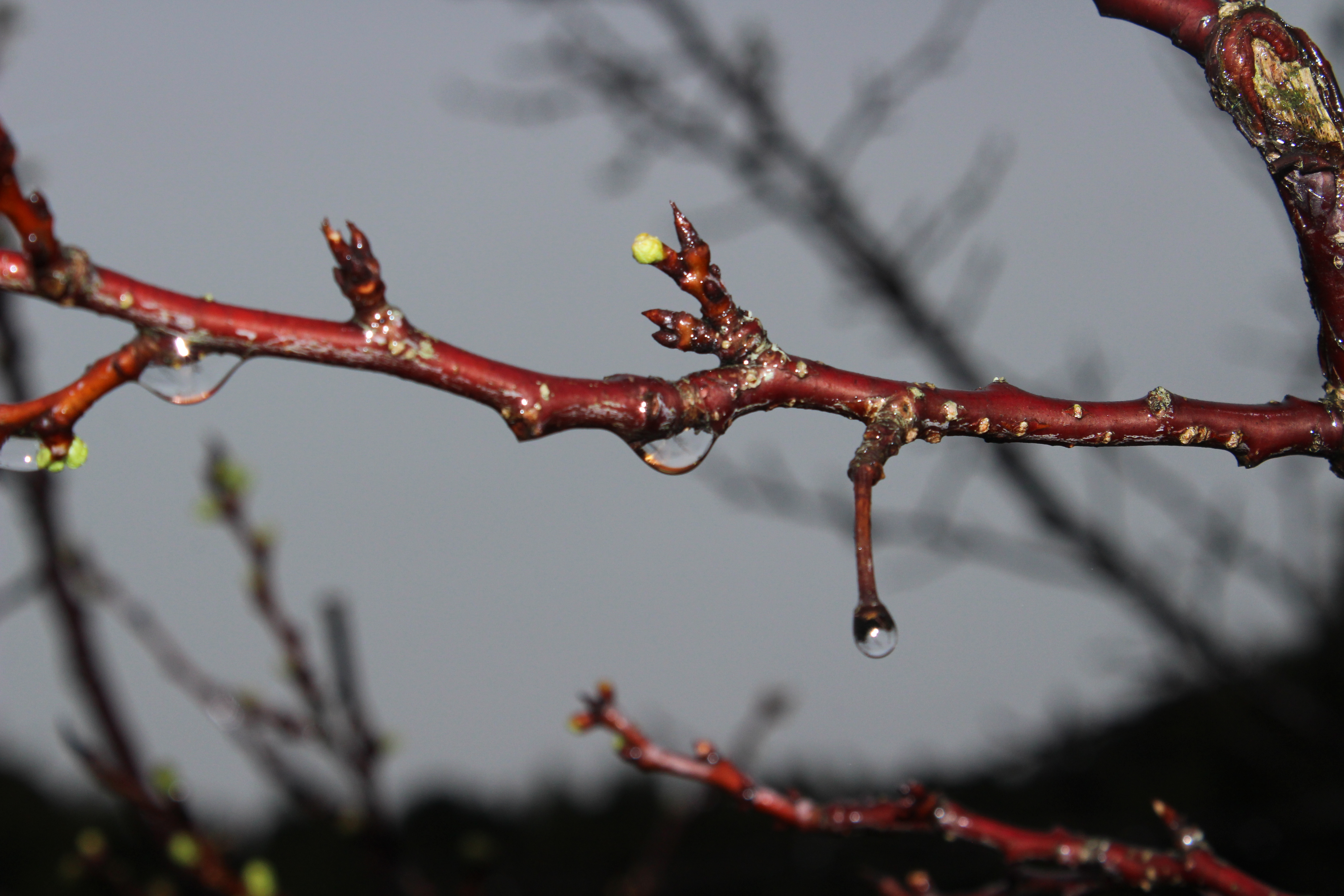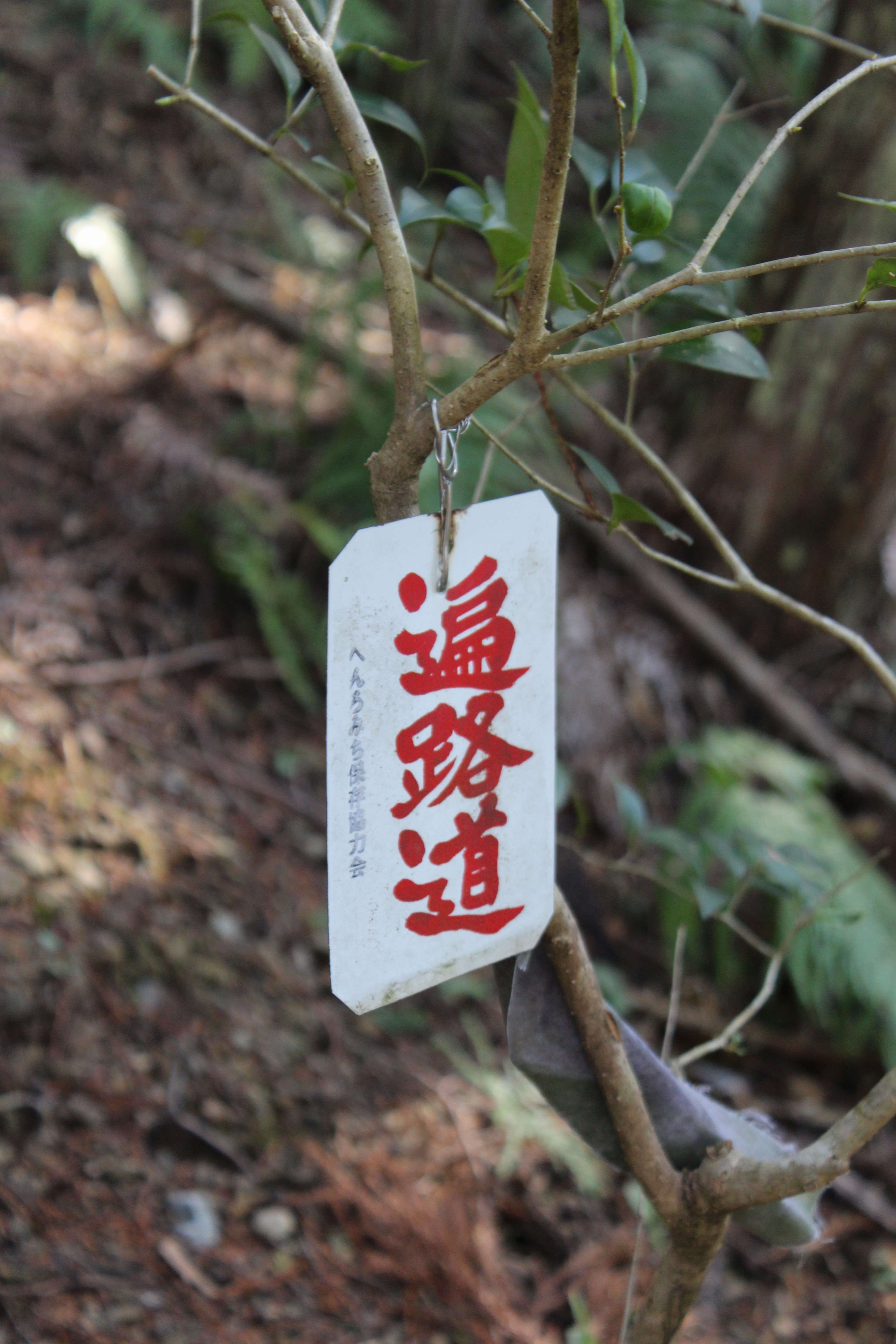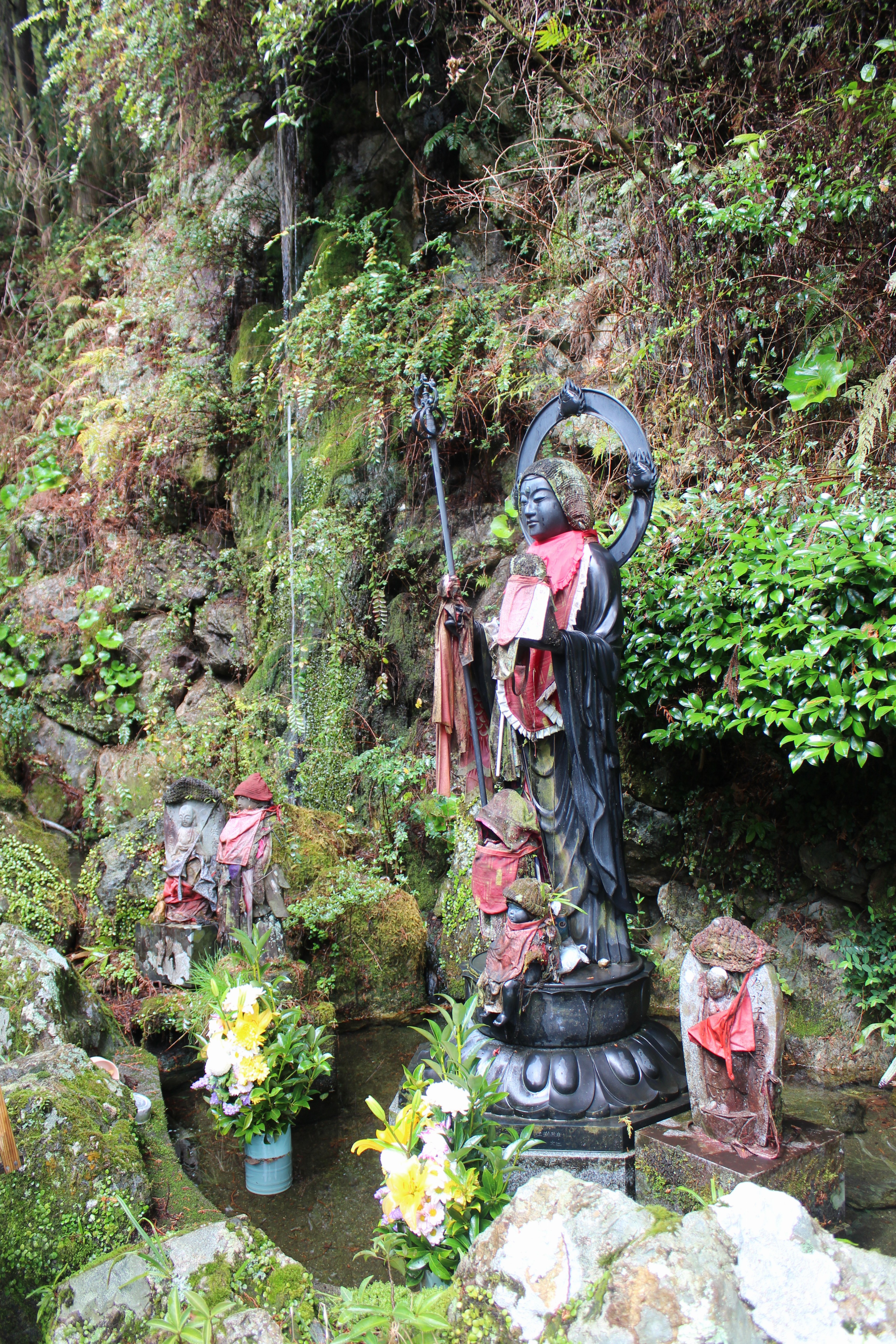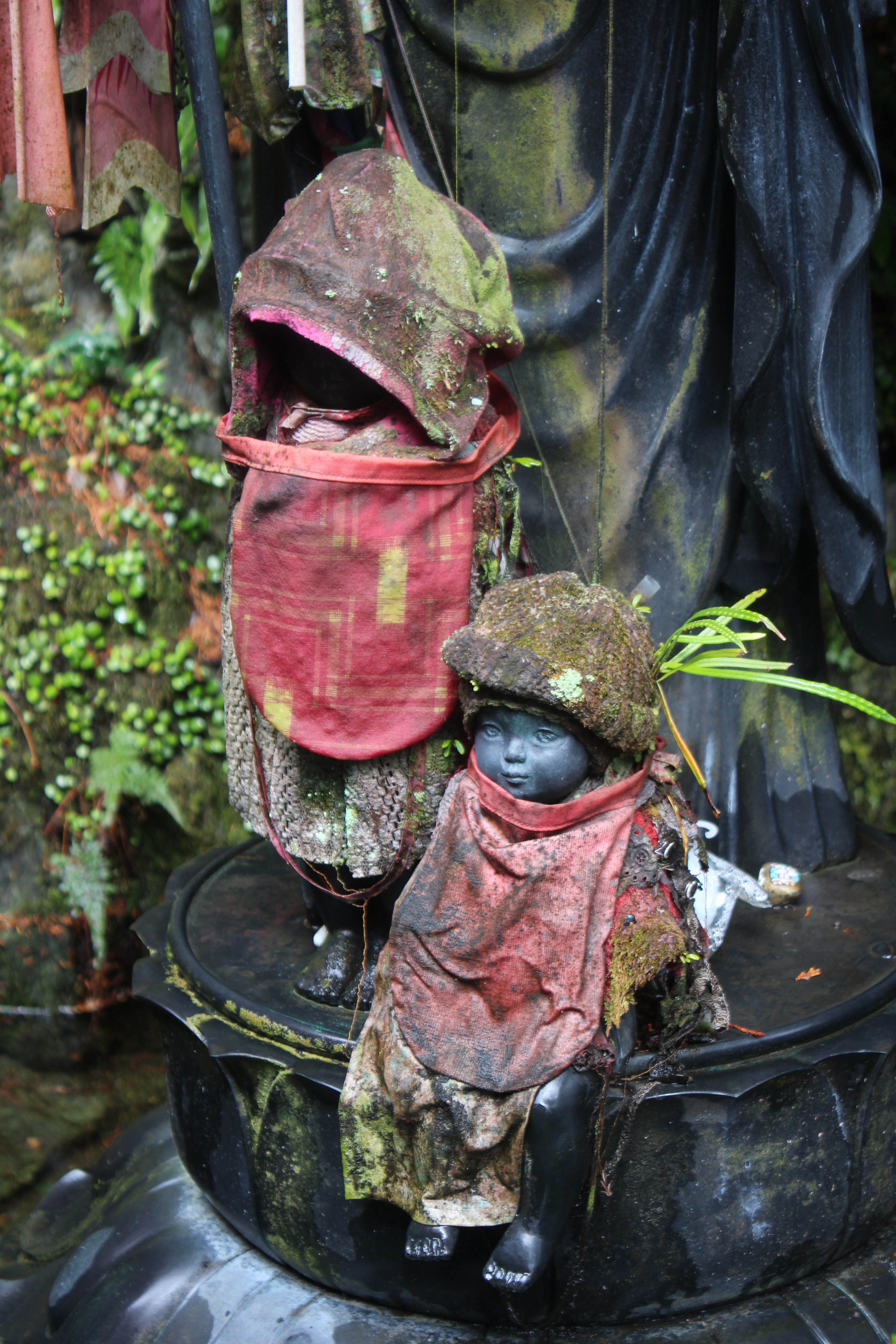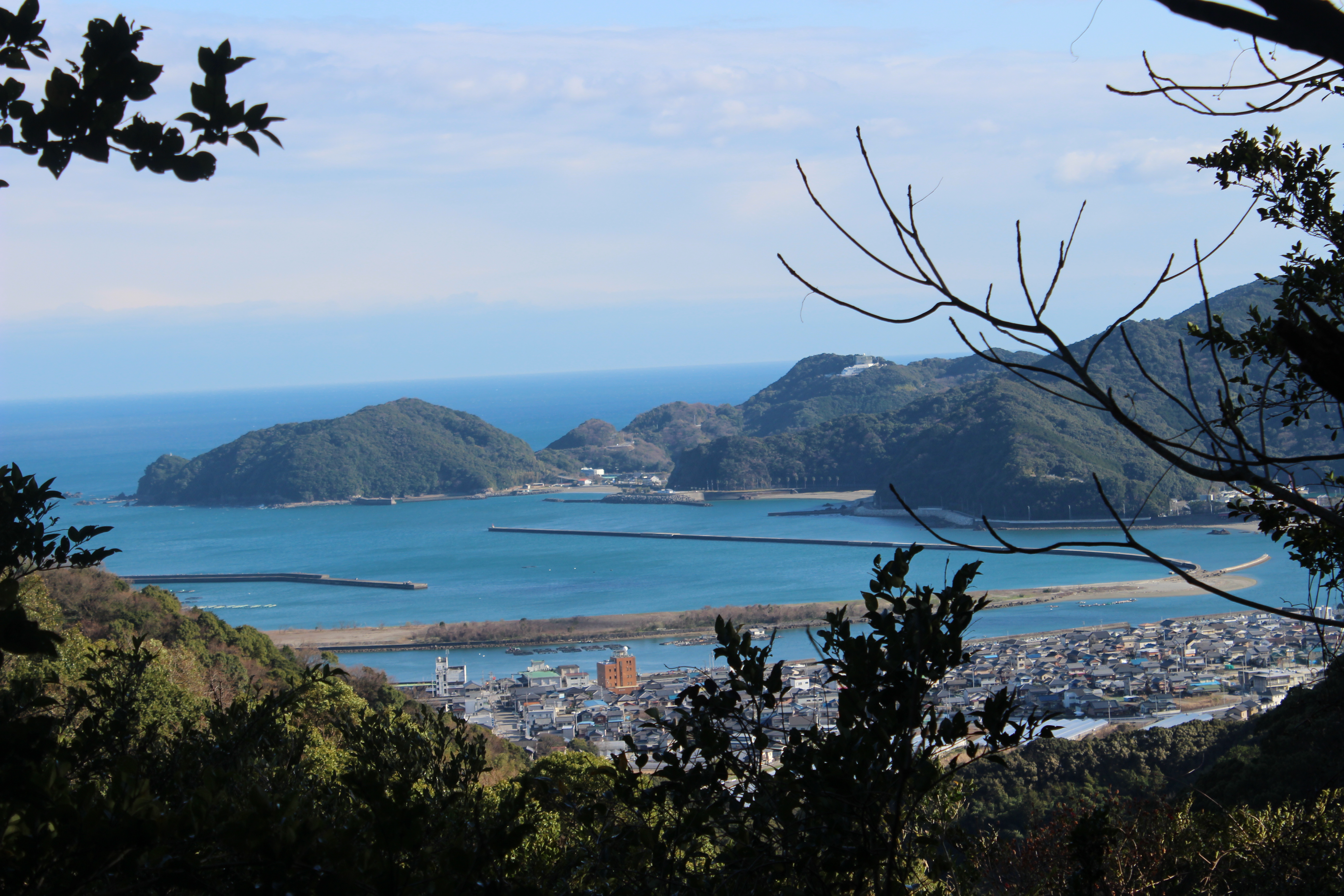Jizō Bosatsu, guardian of children and travellers ( temple 34 – 35)
Jizōs and Kannon are the most popular figures in Japan. Jizōs are everywhere, not only in temples, but also along walkways and streets and, as guardian of the dead, in graveyards.
Three Jizōs along the road on the way to Tanemaji, temple 34, as guardian of the travellers
I always liked walking in the rain. Everything was fresh and green.
First sign of spring
Beside Jizōs accompanying the ohenro , poems and sayings were often attached to branches and trees to support the pilgrim on the path. Unfortunately, my Google translator could not manage to make sense of it most of the time. The Japanese words down below were translated as “way” or “road”. This, at least, made some sense.
Entrance gate to Kiyotakiji, temple 35. Except of a few valley temples, most of the temples are only reachable by stairs.
Ancient, moss covered statues of Sentai Jizōs (1000 Jizōs). They help the unborn children (waterchildren called mizuko) to cross over the Sanzu river, the river of the Underworld. Without his help, they would be trapped forever in no-man’s land. The cult of Jizōs helps mothers get over the death of a child. Parents of unborn or aborted children or children who died early, often decorate Jizō statues with bibs, baby clothing and knitted hats. Sometimes toys are given as offerings.
Kiyotakiji is called “mirror-like-clear-waterfall temple”. Legend has it that Kōbō Daishi fasted there for 17 days. After finishing the fasting, he struck the altar and a clear spring came out of the rock making a pond. This water was and is used for irrigating the rice fields and farmlands. It is also used for the production of hand made paper, the famous “Tosa washi.”
Jizō always holds the walking staff on the right hand (in order to open the gates of hell) and the wish- fulfilling jewel in the left.
Two little children sitting at the foot of Jizō Bosatsu
A row of Jizōs along the path
View to Tosa Bay, Pacific Ocean
.


